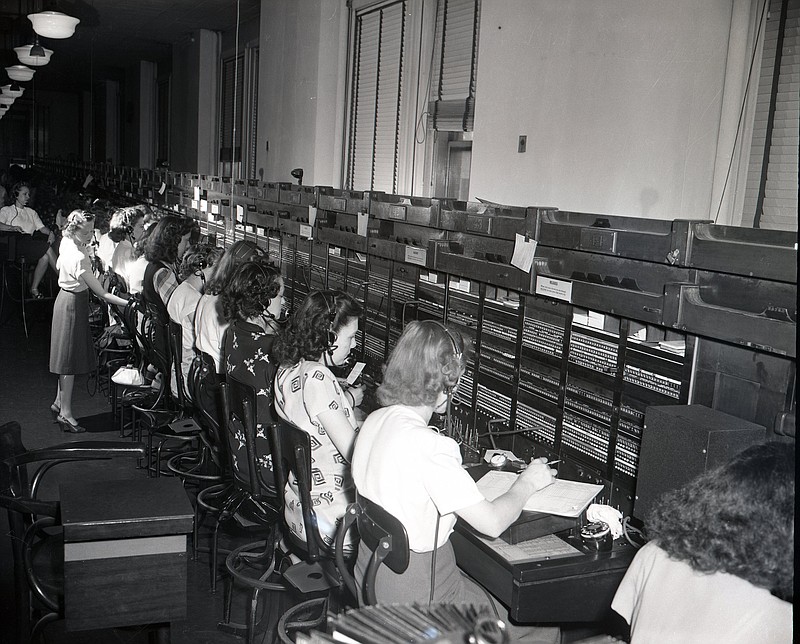Raise your hand if you wondered as a child if the number of phone numbers would ever be exhausted.
We're not there yet, but a story in this newspaper Friday brought the news that within the next year or so we'll have to use the area code — currently 423 — before any local number we call.
"They don't ever want to get to the point where they run out of numbers, and we're not prepared," John Hutton, telecom/utilities consultant for the Tennessee Public Utilities Commission, told this newspaper's Mike Pare.
The growth of East Tennessee within the 423 area code is forcing the change, he said.
The changeover is expected to take about 13 months.
We should probably be thankful we're not being asked to use a personal code — one with upper- and lower-case letters, numbers and symbols — to use before each number we call, and would have to change each month. That way, before we call our spouse, our children or to see what time the restaurant closes, we'd have to go looking for the piece of paper on which we jotted down the most recent code — if we did.
Wasn't technology supposed to make things simpler, rather than more complex?
Before we begin sounding too much like Grampa Simpson, we've in fact come a long way since Alexander Graham Bell rang up his assistant, Thomas Watson, and said, "Mr. Watson, come here — I want to see you."
That was 1876.
The use of area codes in making calls dates back to 1947, one year after the oldest of the country's baby boomers was born. Created by American Telephone & Telegraph Co. (AT&T) and called the Nationwide Numbering Plan, it replaced a hodge-podge system of four- and five-digit phone numbers, according to a 2001 New York Times article.
Tennessee was assigned 901, which is still the area code around the Memphis area, and around 1956 East Tennessee — from the Tennessee River in Middle Tennessee east to the North Carolina border — was given the area code of 615, which is still used around the Nashville area. Most people didn't have to bother learning the area code, though, because an operator still had to do the connecting.
In January 1959, though, with a dinner for press and public officials at the Chattanooga Golf and Country Club, it was announced with great fanfare that Chattanooga would be the first large city in the South and the first in Tennessee to have direct distance dialing, which would allow for what was termed "station-to-station long-distance dialing," according to Southern Bell.
Callers would need to dial a "directing code" of 112, then the area code of the location being called, connecting one dialing network to another, and then the telephone number. The only operator involvement would be for the operator to come on the line just before the connection was made and get the number of the person making the call, which would be automatically recorded on tape for billing purposes.
Sounding a little like today's officials, a Southern Bell executive said the change — in which $3 million had been invested — had become necessary by "the tremendous upsurge in telephone development following World War II."
At the time, about 60 million telephones were in use in the United States, and officials said human operators could no longer keep up with the heavy flow of calls.
To showcase the new service, all those in attendance were allowed to test out the system and call someone long-distance at no charge. The former editor of this page, Lee Anderson, called the Honolulu Star Bulletin, and state Rep. Carter Patten called Gov.-elect Buford Ellington.
The communities of Cleveland, Soddy-Daisy, Jasper, South Pittsburg and Whitwell all were included in the new service, and a handy guide booklet was to be sent to every customer.
By the time the service came on line in April 1959, Southern Bell was promoting direct distance dialing in the same way automobiles, appliances and toys were being marketed. Along with push-button kitchens, Oldsmobile Starfires and Flash Gordon spaceships was the Southern Bell phone company ad that told consumers "It's Rocket-Fast when you Dial the Call Yourself."
East Tennessee, including Chattanooga, kept its 615 area code until 1995, when 423 was introduced. The then-South Central Bell said at the time the change was being made to "[make] sure we have enough telephone numbers," thanks to the "major telecommunications boom" with the popularity of fax machines, computer modems, cellular phones, pagers and additional telephone lines.
Now, 28 years later, we're adding numbers back, sort of like the "directing" code in the early days of direct distance dialing.
Ah, technology.
